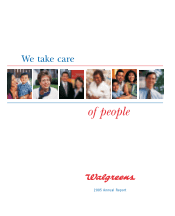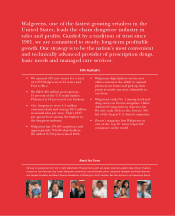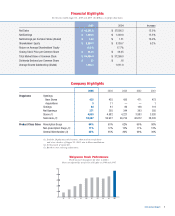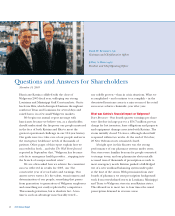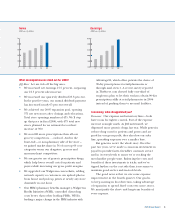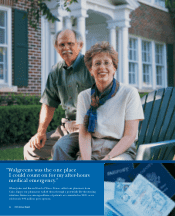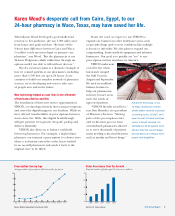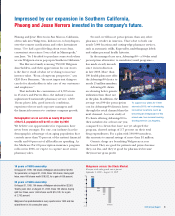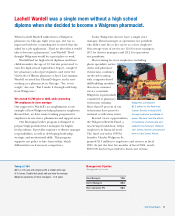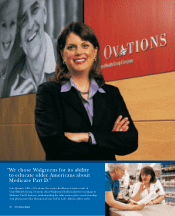Walgreens 2005 Annual Report Download - page 5
Download and view the complete annual report
Please find page 5 of the 2005 Walgreens annual report below. You can navigate through the pages in the report by either clicking on the pages listed below, or by using the keyword search tool below to find specific information within the annual report.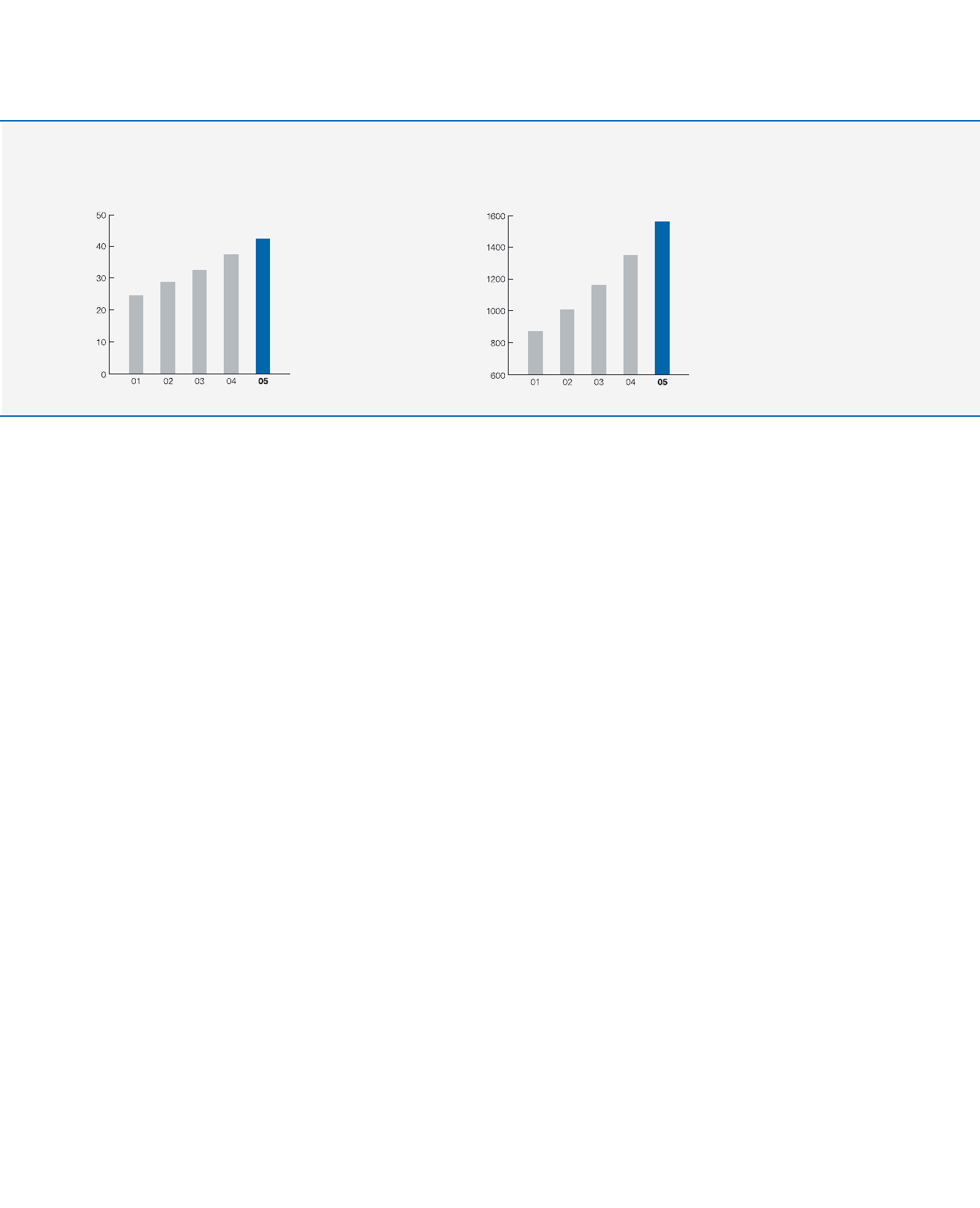
What accomplishments stand out for 2005?
Jeff Rein: Let me tick off the big ones.
•We increased net earnings 15.5 percent, outpacing
our 12.5 percent sales increase.
•We increased our quarterly dividend 23.8 percent.
In the past five years, our annual dividend payment
has increased nearly 65 percent overall.
•We achieved our 2005 expansion goal, opening
371 net new stores after closings and relocations.
Total store openings numbered 435. We’ll step
up that pace in fiscal 2006, with 475 total new
stores planned for an estimated record net
increase of 390.
•We now fill more prescriptions than all our
grocery competitors …combined. And in the
front-end – or non-pharmacy side of the store –
we gained market share in 54 of our top 60 core
categories versus our drugstore, grocery and
mass merchant competitors.
•We saw greater use of generic prescription drugs,
which help lower overall costs for patients and
payers while increasing our gross profit margins.
•We upgraded our Walgreens.com website, adding
network capacity so customers can upload photos
from home and pick up prints at nearly any store
chainwide in one hour.
•Our PBM (pharmacy benefits manager), Walgreens
Health Initiatives (WHI), controlled client drug
costs better than other leading PBMs. WHI is
leading a major change in the PBM industry with
Advantage90, which offers patients the choice of
90-day prescriptions at retail pharmacies or
through mail service. A recent survey reported
in TheStreet.com showed fully one-third of
employers plan to let their workers obtain 90-day
prescription refills at retail pharmacies in 2006
instead of pushing them to use mail facilities.
Conversely, what disappointed you?
Bernauer: Our expense and inventory lines – both
have room for tighter control. Part of the expense
increase is simple math. As Jeff mentioned, we
dispensed more generic drugs last year. While generics
reduce drug costs for patients and payers and are
good for our gross profit, they also slow our sales
line, spreading expenses over a smaller base.
But generics aren’t the whole story. Over the
past two years, we’ve made a conscious investment in
payroll to provide faster, friendlier customer service
and in inventory levels to assure we’re stocking the
merchandise people want. Balancing the costs and
benefits of these investments is tricky, and we’ve
tipped further on the cost side than is necessary to
maintain good service and in-stock levels.
The good news is that we saw some expense
improvement in the fourth quarter. Our goal is
to keep moving in that direction, taking advantage
of expansion to spread fixed costs over more stores.
We must justify the short- and long-term benefits of
every expense.
Sales
Billions of dollars
Earnings
Millions of dollars
2005 Annual Report 3

